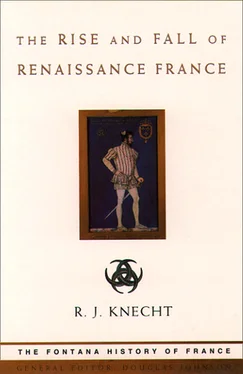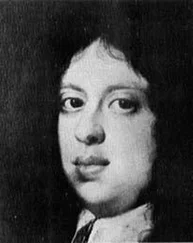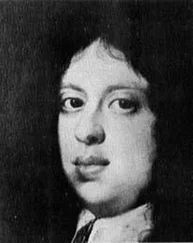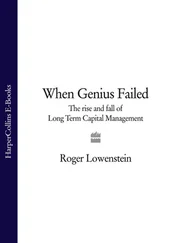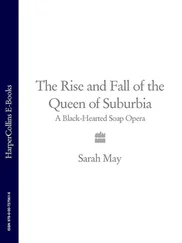The bulk of France’s population consisted of the third estate, made up of people of widely different fortunes and occupations. Seyssel in his La Monarchie de France (1519) made a useful distinction between middling people ( peuple moyen ) and the lesser folk ( peuple menu ). The former, he explained, were merchants and officers of finance and justice. The peuple menu were people principally engaged in ‘the cultivation of the land, the mechanical arts and other inferior crafts’. Seyssel believed that such people should not be ‘in too great liberty or immeasurably rich and especially not generally trained in the use of arms’, otherwise they might be tempted to rise against their betters. The third estate had its own hierarchy defined by custom and expressed in certain honorific titles, such as noble homme or honorable homme , in notarial documents, but most Frenchmen did not qualify for such titles. As one historian has written: ‘four-fifths of Francis I’s subjects fell into anonymity’.
At a meeting of the Estates-General in 1484 Philippe Pot, representing the Burgundian nobility, described kingship as ‘the dignity, not the property, of the prince’. The crown, according to the jurists, was handed down to the nearest male kinsman of the deceased monarch. The king was not free to give it away or to bequeath it to anyone; he was only the temporary holder of a public office. Yet the concept of the king as head of the state already existed. The word ‘state’ did not come into current usage till the mid-sixteenth century, but the idea existed under the name of ‘commonwealth’ ( chose publique ) or ‘republic’. Although official documents distinguished between the king and the state, the interests of both were closely identified. Thus in 1517, Chancellor Duprat said: ‘The kingdom’s interest is the king’s interest, and the king’s interest is the kingdom’s interest. For it is a mystical body of which the king is the head.’ As head of state, the king was not bound to assume the obligations entered upon by his predecessors; the debts of a king could be legitimately repudiated by his successor. A corporation or individual holding privileges from the crown needed to have them confirmed at the start of a new reign. The same rule applied to office-holders.
‘The king never dies’. This adage embodied an important principle of French constitutional law: the king succeeded from the instant of his predecessor’s death. No interregnum, however brief, was deemed possible. Nor could a lawful king be denied the full exercise of his authority for reasons of age or health. If he were a minor or unfit to rule for some other reason, his authority was exercised in his name by his council, although in practice a regent was appointed. Contemporary opinion favoured the king’s nearest adult male kinsman for this role, but in the sixteenth century it was repeatedly filled by a woman: Louise of Savoy under Francis I and Catherine de’ Medici under Charles IX.
In the sixteenth century the coronation or sacre at Reims was no longer regarded as essential to the exercise of kingship, yet it remained important as a symbol of the supernatural powers of kingship and of the close alliance between church and state. The coronation service began with the oath. Standing over the Gospels, the king promised to promote peace in Christendom, to protect Christians against injury, to dispense justice fairly and mercifully, and to expel heretics from his dominions. This was followed by the anointing, the most important part of the ceremony. Thrusting his hand through slits in the king’s garment, the archbishop of Reims anointed his body with a chrism allegedly handed down from heaven by a dove at the baptism of King Clovis in 496 and used ever since to consecrate France’s kings. The anointing set the king apart from other men, giving him a quasi-sacerdotal character. Although no French king ever claimed the right to celebrate mass, he did take communion in both kinds, a privilege enjoyed only by priests.
By virtue of his anointing the king of France, who bore the title of ‘Most Christian King’, was deemed to possess thaumaturgical powers, that is to say powers of healing the sick. The only other Christian ruler to claim this power was the king of England. In time, it became restricted to the curing of scrofula, or tuberculosis of the lymph nodes on the side of the neck, a disease more repulsive than dangerous and subject to periods of remission. The king touched the victim’s sores and tumours with his bare hands, and, making the sign of the cross, said: ‘The king touches you and God cures you.’ Each victim was then given two small silver coins.
France at the end of the Middle Ages was still a largely feudal country: many towns, corporations and individuals enjoyed a degree of autonomy, regarding themselves as parties to a contract in which mutual obligations were laid down and complete submission to the king was ruled out. But a school of thought existed which advocated royal absolutism. Its chief exponents were the royal jurists, who found in Roman law the idea of absolute power vested in one man and of subjects equally subservient to him. The doctrine was backed up by the Christian concept of the king as God’s vicegerent on earth. It was claimed that he could legislate, dispense justice, revoke all lawsuits to his own court, levy taxes and create offices. He could also annul any concession detracting from his authority, and local privileges could survive only if he chose to renew them at his accession. The authority of Cicero was invoked to show that the king was entitled to sacrifice private interest to the public good.
Roman legal concepts, as elaborated by medieval commentators, were accepted in sixteenth-century France. Jurists identified the king with the Roman princeps and declared him to be emperor within his own kingdom. This simply meant that he was independent of both pope and Holy Roman Emperor in temporal matters. The idea of his absolute authority was universally accepted in French law, but he was not expected to rule absolutely without his subjects’ consent as expressed through certain institutions, notably the Parlement of Paris, which was commonly regarded as the modern equivalent of the ancient Roman Senate.
The best-known statement of the constitutionalism that prevailed in sixteenth-century France was La Monarchie de France by Claude de Seyssel, who became bishop of Marseille after long years of service to the crown as a councillor, administrator and diplomat. Like Machiavelli he was a realist, who viewed politics as a science distinct from morality and religion. Being an Aristotelian, he valued moderation in a constitution, and believed that the French kings owed their greatness to their voluntary acceptance of three constraints ( freins ) – religion, justice and la police – on their power. Writing of justice, Seyssel affirms that it is ‘better authorized in France than in any other country we know in all the world. This is especially owing to the parlements, which have been instituted to put a bridle on the absolute power that our kings would have wished to use.’
However absolute, the monarch needed an administrative machinery at the centre of the kingdom and in the localities, to carry out his policies. Its chief component was the king’s council, which in 1500 was still evolving. In theory its members comprised the princes of the blood, the peers of the realm and the great officers of state, but in practice admission was by royal invitation. Before 1526 the council was a large body. Between August 1484 and January 1485 there were 120 councillors, but only a small proportion of them attended with any degree of frequency. It is likely that a core of working councillors existed within the larger body. In 1502 this core consisted of only four members, of whom three belonged to the house of Amboise. Financial business was apparently dealt with separately by experts, who nevertheless continued to attend the council when non-financial matters were being discussed, The council might also divide for administrative convenience. Thus in 1494 part of the council followed Charles VIII to Italy while the rest stayed in Moulins with Pierre de Bourbon. The situation has been described as ‘one of relative informality and of response to immediate royal needs. Some councillors were specialists and the disposition of personnel in terms of location was fluid, but these were not structural arrangements within the council as an institution.’
Читать дальше
